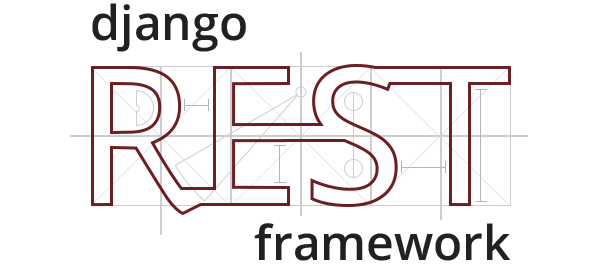Build powerful APIs with Python. Let’s explore how!
Python is one of the most versatile programming languages today. It has got its popularity because of its readability, less complex syntax, and ease of learning. Over the past couple of decades, Python has been used in multiple domains for multiple applications. It has been used for automation, web development, data analytics, application development, and this article’s focus, Application Programming Interface (APIs).
Application user interfaces are used to access some information or functionality over the Internet. For example, you can write a Python program to use Twitter API for executing a functionality that can collect tweets for a particular hashtag. An API makes it easier for developers to use certain technologies to build applications using certain predefined operations. It helps in connecting various dots.
Thankfully, there are plenty of Python frameworks, but not all of them are meant for APIs. Let’s explore some of the popular ones you can use to develop APIs.
Django REST
Django REST is a Python-based REST framework used a lot by developers to build web APIs. Rest stands for representational state transfer, which is used for web-based architecture for data communication. It uses HTTP to make calls between machines. GET, PUT, POST, and DELETE are few standard methods used in the Django rest framework.

Django rest framework is just a way to build out REST API using Django, so it’s just a toolkit that we can work with. It gives us a lot of extra functionality. Using pip, you can install the Django REST framework in a single command on your system. But before installing Django REST, you need to have Python version 3.5 and a Django on your system.
Django REST features:
- Web browsable APIs and has huge usability for developers
- Multiple in-built authentication policies
- Serialization which supports both ORM and non-ORM data sources
- Extensive and good documentation to refer and learn
- A very active community support
- Trusted by organizations like Red Hat, Mozilla, Heroku
- Supports automatic URL routing to Django
- Supports testing, caching, throttling, etc.
Flask Restful
Flask Restful is an extension of the Flask framework used by developers to build rest APIs quickly. It is known for making micro web services because it has a very lightweight module. It is swift and requires only a few code lines to initialize the Flask and start using it to make an API.

It is straightforward to set up and encourages best practices for building APIs. In the last few years, many features have been added to Flask, and now it is as good as a full-stack framework. It is the preferred choice of web developers for building web applications and their APIs.
Flask Restful features:
- Very lightweight and simple to install
- Provides resources which is the building block of flask restful. It is used to access multiple HTTP methods.
- Comes with fields module and the marshal_with() decorator for data formatting
- Allows you to control what out fields to show in the response after rendering
- Allows you to add custom fields and inputs based on your data type
- Provides representation() decorator to support other representations such as XML, CSV, HTML
Falcon
Falcon is the web framework that is used to build reliable and high-performing large-scale application backends and microservices. Falcon defines its API resources using an object-oriented and class-based interface. It is compatible with multiple servers and platforms as it is WSGI compliant.

Falcon embraces HTTP and REST architecture style, which is used to create clean designs. The motto of Falcon is to do as little as possible but still be highly effective. This REST framework is focused on quality control.
Falcon features:
- It comes with a built-in server and debugger for the development
- Lightweight with minimal setup
- Majorly used for faster performance
- Mapping of URIs to resources are REST inspired
- Supports routing, HTTP protocol handling media handling, cookies, and URI utilities
- Integrates with NoSQL easily
- Supports integrated unit tests
- Provides support for secure cookies
- It supports Python 2.7, 3.5 and compatible with Pypy
Connexion
Connexion handles HTTP requests automatically, and it is based on the OpenAPI Specification. The OpenAPI specification is described in YAML format. Unlike other tools where you get a generated specification based on the Python code, Connexion allows you to write an OpenAPI specification and map the relevant Python functions’ endpoints. Once you describe your REST API in detail, Connexion makes sure it works.
Connexion features:
- Based on the specification you provide, it Validates requests and endpoints.
- Handles token-based authentication using OAuth 2
- Supports API versioning
- Come with Web Swagger Console UI, which also allows calling API’s endpoints.
- Automatically serializes the payloads
FastAPI
As the name suggests, FastAPI is one of the fastest and high-performance Python frameworks for building APIs. It is a complete package of a full web framework. Using FastAPI, you can develop code 200 to 300% times faster. The popularity of FastAPI is growing significantly in the Python community, with 200 contributors and 28.6K starts so far.

FastAPI is based on ASGI specification and is majorly used for building asynchronous web applications. The following are some of its features.
- Based on open standards – OpenAPI, JSON schema, automatic client code generation
- Swagger user interface to call and test APIs from a browser
- Interactive API documentation
- Reduces 40% of bugs generated by developer errors in the code
- Minimizes the duplication of code
- Intuitive editor support (VSCode/PyCharm) with autocompletion
- It comes with integrated security and authentication
- Dependency injection system to handle all the dependencies automatically
- Fully compatible with Starlette and Pydantic
- Unlimited support for plugins
- Supports application testing using PyTest
- Supports SQL databases, NoSQL databases, GraphQL
Hug
Hug is a very nice microframework that allows you to build APIs, CLIs, and local packages. It allows you to create the API once and use that API anywhere in their code. Hug uses Cython for compilation and consumes resources only when required; this helps Hug deliver very high performance.

You can install Hug using pip in a single command. It is one of the cleanest ways to build HTTP REST APIs on Python 3. To build APIs, Hug separated version dependencies and interface from the API business logic. It offers multiple interfaces to simplify the API development for the developers.
Hug features:
- It follows the philosophy of write-once use anywhere
- Exposes API logic via multiple interfaces (CLI, HTTP, or a local function)
- Provides hug.test module to test the full Python stack of your API
- Clean and easy to understand documentation
Eve
Eve is built on top of Flask and Cerberus. The goal of this python framework is to make API development simple and fast. It creates RESTful web services effortlessly, which are highly customizable. This framework is majorly preferred for mid-sized projects.

Eve features:
- Supports Full range of CRUD operations
- Supports customizable endpoints, pagination, sorting, filtering
- Provides advanced features such as authentication, rate limiting, caching
- Easily integrates with SQL databases, MongoDB, Elasticsearch, and Neo4js.
- Out-of-the-box support for data validation
- Supports CORS, Cross-Origin Resource Sharing
- Proved several events for enhanced logging
Cornice
Cornice is a REST framework for Pyramid, which provides helpers to build & document REST-ish Web Services. Pyramid is designed to scale with an application. It follows HTTP specification automatically wherever possible.
Cornice features:
- One path in cornice is equal to one service
- Throws 400 error automatically after validation the content if the data is invalid
- Adds CORS (Cross-Origin Resource Sharing) support to your services
- Use Pyramid’s Access Control Lists (ACLs) for authorization
- Returns 406 Not Acceptable for invalid media type with an error message containing all the supported content types
- Supports URL prefixing for all your routes
- Uses Tox, a command-line driven tool in Python for automated testing
Conclusion
That was my list of some of the popular Python frameworks to build APIs. I hope you have found this list interesting to get started with. To appreciate what these Python frameworks offer, you need to give them a try. So, what are you waiting for? Choose any of these REST frameworks and start building APIs in Python.
Next, explore JavaScript frameworks to build APIs.


![Kirelos Blog How to Call a Function in Python [With Examples] How to Call a Function in Python [With Examples] programming language Python](https://kirelos.com/wp-content/uploads/2023/12/26798/how-to-call-a-function-in-python-with-examples-600x450.jpg)
